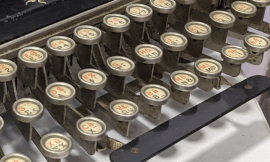From neutralizing a suicide vest at the Bataclan to analyzing suspicious powder using a spectrometer, experts from the Central Laboratory of the Paris Police Headquarters (LCPP) wear out both their shoes and their workbenches in service of the most complex investigations.
Using a scalpel, Alisson Aujoux delicately opens an envelope addressed to “Mr. President – Elysée – France” inside an airtight box called a containment tent. Inside, there is a sheet with a printed skull and white powder.
“Our role is to assist in the investigation,” reports Alisson Aujoux. The engineer, protected by a suit, mask, and goggles, takes a small sample and places it on the “Hazmat,” an infrared spectrometer that can detect hazardous substances. The device’s verdict: simple baking yeast, used for this exercise.
“Our specificity is unknown products. We start with a white powder and discover many compounds. We have been able to identify insecticides that have been banned in France for years,” emphasizes Dorian Terret, a 25-year-old chemist who was just hired.
“We cover the entire Île-de-France region, which is 10% of the French population. So there are a lot of people, a lot of cases, and a lot of analyses. That’s why having this laboratory is crucial,” he emphasizes.
The laboratory conducts 1,500 to 2,000 interventions each year, spread across its three round-the-clock shifts: bomb disposal (suspicious packages, aviation bombs, security visits, etc.), explosions and fires, and chemical, biological, and radiological risks (powders, air pollution, etc.).
The expertise of the “lab” at the “PP” has been called upon for the most high-profile cases, including the terrorist attacks in 2015, the Notre-Dame Cathedral and Lubrizol site fires in Rouen in 2019, and the explosion on Saint-Jacques Street in Paris in June 2023.
With a staff of 200, the laboratory offers its 60 engineers and 70 technicians “a unique blend of science and adrenaline from the field,” says its director, Christophe Pezron. They sometimes work under urgent conditions. Karine Van Niel, a specialist in the analysis and research of flammable liquids, explains that during an investigation into a fire, they may have to analyze gloves worn by suspects in custody and provide results within the day.
Thanks to a range of devices with obscure names for the layman (thermal desorber, gas chromatograph, mass spectrometer), she can determine the presence or absence of a flammable liquid from just a single drop. “If there is no liquid, it may mean that the fire was caused by another means, such as a lighter. We are here to assist investigators. Our results will really guide their conclusions,” she adds.
With less than a year to go until the Olympic Games, the central laboratory expects its activity to increase during the competition, particularly in their bomb disposal unit, which is the most visible and well-known to the general public. As Bruno Bergeron, the head of the bomb disposal teams, points out, “Since the start of the preparations for the Olympics, we have unearthed seven or eight bombs.”
Securing the venues for events and hosting athletes, not to mention the expected increase in reports of suspicious packages due to the influx of fans and tourists, will require reinforcements, including from the civil security, gendarmerie, and army.
The LCPP has also collaborated on doctoral work at the University of Paris-Saclay on crowd movement modeling to optimize the layout of the Seine quayside during the opening ceremony and determine the number and position of emergency exits.
Once again, a lab with both brains and brawn.



